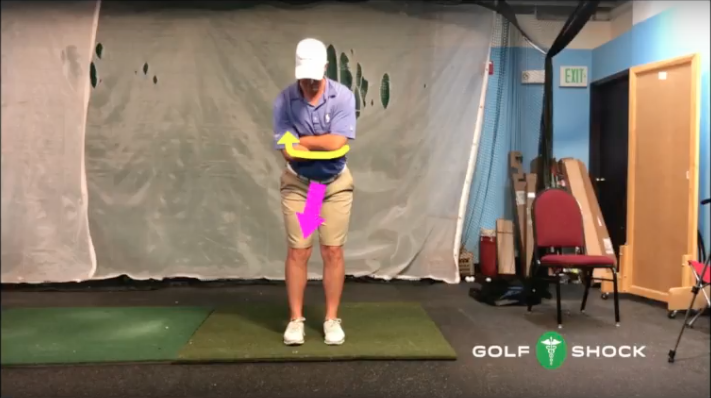Have you ever hit a ball so far right or so far left that you couldn’t believe your eyes? We’ve all been there. No matter if the ball goes into someone’s window or dings the cart of an innocent passerby, the cause is always the same: bad legs and hips (at least that’s what Jim Flick once told me).
Unfortunately for us, golf swings are quite inconsistent, so predicting these wild shots is nearly impossible. Preventing them is not.. Biomechanically, a golf swing can be very complex or very simple. It is my belief that, with a simple swing, we can become much more consistent and hit the ball in the center of the club more frequently.
Since golf began, which was in the 1400’s, players have debated whether the swing should be led by the arms or the body. There’s no question that we use both when swinging the club. The arms are physically attached to the club, they create the load in the shaft and determine when the load will be released. The body, on the other hand, supports the swinging of the arms. It determines spine movement, which I believe is a crucial element of the golf swing.
When the spine is aligned and moves properly, the back is protected and the body is in position to swing the club faster. But you can’t have one without the other; arm movement and proper body control are key to a great swing.
In my video, “Biomechanics of a Simple Golf Swing,” I demonstrate how the arms can be swung by using few muscles. However, classic golf teaching calls for players to use their hips to turn their shoulders. At least 24 muscles are involved in hip rotation, all of which need to fire at different rates and different times to produce a great swing. No wonder our golf swings are so inconsistent!
As I continue to study biomechanics and teach golf, I am constantly challenged by my students’ inconsistencies. Each one is unique in their quest to create a simple yet competitively efficient golf swing; no two swings are alike! The source of their inconsistencies lies in the body turn. It is the most biomechanically complex portion of the golf swing. Not only is it difficult to consistently repeat the motions, but the sequence of firing the muscles with the appropriate velocity and force requires a significant amount of practice.
Even the best players in the world struggle with their hips opening to quickly. Jim Flick turned Tom Lehman’s career around by training him to keep his knee bent through impact. This slows the opening of the hips, although some people can keep their knee bent and still open the hips too quickly. Unfortunately, opening the hips too quickly causes the shoulders to do the same, causing the club to pull to the far left. In this scenario, golfers either hit the ball left or change the face of the club (block it).
You can train your body to turn in a much more controlled fashion. I have developed a technique to turn the trunk by using just three muscles, instead of 24, resulting in a much more consistent golf swing. This technique is very simple and does not rely nearly as much on timing the speed of the turn. In fact, by using the right external oblique to turn the trunk on the forward swing, you can fire as hard as you want (as long as you fire at the proper time) without opening the hips and shoulders too early.
I know what you’re thinking, “If this is true then why haven’t I heard about it already?” Yes, this technique has not yet been recognized by top golf media, but watch the players. Several of them, including Rickie Fowler and Justin Thomas, have started to use their external obliques to turn the body. These players are firing nicely through impact to prevent the body from opening too quickly, and they happen to be two of the longest hitters on the tour.
Using the external obliques to turn the body cuts down on spine movement and allows the spine angle to stay intact. Less body movement enables you to consistently hit the ball more in the center of the clubface, increasing distance and accuracy. The more stable the body is through impact, the faster the arms can swing.
The simple biomechanics of this body turn will revolutionize golf swing theories. On a personal level, it has made a huge difference in my ability to teach the golf swing in a way that students can learn much more quickly. It has also elevated their games and I’m sure that it will elevate yours.
If you want to consistently hit the ball farther, straighter and in the center of the clubface, master the techniques in the video.


One thought on “How to Turn the Body – No More Wild Shots”
Funny (not hahh-hahhh funny) that Rickie Fowler has now hurt his right oblique. So now he has a hold-off move AND an injured right oblique. He should go back to his beautiful (and simpler) Walker Cup swing.